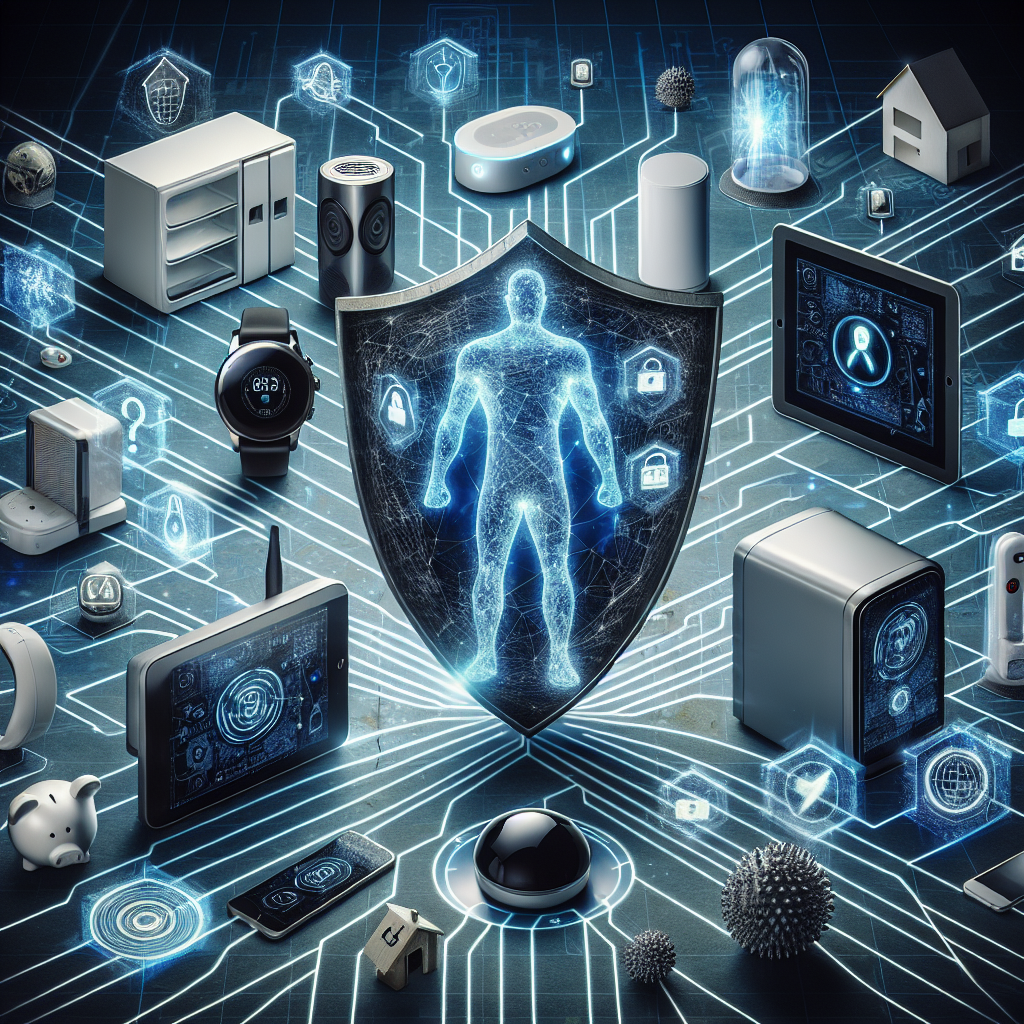Introduction
The Internet of Things (IoT) has revolutionized the way we interact with everyday objects, turning ordinary devices into smart gadgets capable of collecting, sharing, and acting on data. These devices range from smart thermostats and security cameras to wearable health monitors and even connected kitchen appliances. While the convenience and efficiencies brought about by IoT devices are undeniable, they also introduce significant cybersecurity risks. As our homes and lives become increasingly interconnected, understanding the cybersecurity implications of these devices becomes essential. This article delves into the vulnerabilities associated with IoT devices, their impact on cybersecurity, and how consumers can protect themselves.
Understanding IoT Devices
Before diving into the security implications, it’s essential to define what IoT devices are. IoT refers to a network of physical objects embedded with sensors, software, and other technologies to connect and exchange data with other devices over the internet. These include:
- Smart home devices: Thermostats, lights, locks, and appliances.
- Wearables: Fitness trackers, smartwatches, and health monitors.
- Connected vehicles: Cars equipped with internet connectivity and smart features.
- Industrial IoT: Machinery and equipment in manufacturing facilities that communicate performance data.
The Cybersecurity Landscape
The very nature of IoT devices creates inherent cybersecurity challenges. Here’s how IoT devices contribute to the evolving cybersecurity landscape:
1. Increased Attack Surface
Every connected device becomes a potential entry point for attackers. With millions of IoT devices in use globally, each one offers an opportunity for cybercriminals to exploit vulnerabilities. If even one device is compromised, it can serve as a gateway into a broader network, leading to more extensive breaches.
2. Weak Default Security Settings
Many IoT gadgets come with factory-set passwords and security configurations that are either weak or easily guessed. Users are often encouraged to change these settings, but not all do, leaving devices vulnerable to attacks. Additionally, many manufacturers do not prioritize security in their design, focusing instead on ease of use and speed to market.
3. Lack of Regular Updates
Unlike traditional computers and smartphones, which periodically receive software updates and security patches, many IoT devices are not regularly maintained. Some devices may never receive an update, leaving them susceptible to newly discovered vulnerabilities. When manufacturers stop supporting a device, it remains vulnerable indefinitely.
4. Data Privacy Concerns
IoT devices often collect and transmit sensitive personal data, whether it’s health information from a wearable or security data from a home surveillance system. Breaches involving such data can lead to significant privacy violations, identity theft, and financial harm.
5. Botnet Formation
Compromised IoT devices can be recruited into a botnet—a collection of interconnected devices that work together to carry out malicious activities, such as distributed denial-of-service (DDoS) attacks. Notorious botnets like Mirai have illustrated the destructive capabilities of these networks, which can cause widespread disruption.
The Impact of Vulnerable IoT Devices
The vulnerabilities linked to IoT devices have far-reaching implications, both for individual users and the broader cybersecurity ecosystem:
-
Individual Risk: Cyber attacks can lead to unauthorized access to personal data, financial loss, and breaches of privacy. For instance, a hacked smart camera may allow an intruder to spy on your daily routines.
-
Corporate Risk: Businesses utilizing IoT devices may face reputational damage, financial loss, and legal implications if customer data is compromised. As IoT becomes more integrated into business infrastructures, the risks multiply.
- Public Safety: Critical infrastructure, such as energy grids and transportation systems, increasingly relies on IoT technology. A cybersecurity breach in these areas can have disastrous consequences, including disruptions to public safety services.
Protecting Yourself in an IoT World
Despite the risks, there are steps consumers can take to protect their smart gadgets from cyber threats:
-
Change Default Passwords: This is one of the simplest yet most effective steps to secure IoT devices. Always choose strong, unique passwords that are difficult to guess.
-
Keep Software Updated: Regularly check for firmware updates from manufacturers and apply them promptly to ensure that devices benefit from the latest security patches.
-
Segment your Network: Consider setting up a separate network for IoT devices, isolating them from critical devices like computers and smartphones. This can limit the spread of an attack if one device is compromised.
-
Enable Two-Factor Authentication (2FA): Where offered, enable 2FA on your IoT devices to add an extra layer of security.
- Regularly Monitor Devices: Be vigilant about monitoring the behavior of your connected devices. Unusual activity may indicate a security breach.
The Role of Manufacturers
Manufacturers also play a critical role in enhancing the security of IoT devices. They can:
- Prioritize Security: Incorporate security measures into the design and manufacturing processes.
- Commit to Regular Updates: Ensure ongoing support for devices in the field, including timely security updates.
- User Education: Provide clear, accessible information to consumers about how to secure devices and why it matters.
Conclusion
The emergence of IoT devices has undeniably altered the way we live, bringing about a new era of convenience and connectivity. However, with these benefits come substantial cybersecurity risks. Understanding these risks, implementing proactive measures, and demanding greater responsibility from manufacturers are essential steps we can all take to protect ourselves in an increasingly connected world. Your smart gadgets can be powerful tools, but they can also become vulnerabilities if proper precautions are not taken.
FAQs
Q1: What is an IoT device?
A1: IoT (Internet of Things) devices are everyday items embedded with sensors and software that connect to the internet and communicate, allowing for interaction and data exchange.
Q2: Why are IoT devices considered vulnerable?
A2: They can have weak security defaults, lack regular updates, and often collect sensitive data, which makes them attractive targets for cybercriminals.
Q3: How can I secure my IoT devices?
A3: Change default passwords, enable two-factor authentication, regularly update software, and monitor device behavior.
Q4: What kinds of attacks can IoT devices be subjected to?
A4: Common attacks include unauthorized access, data breaches, and being hijacked to form botnets for larger attacks, such as DDoS attacks.
Q5: Are manufacturers responsible for the security of IoT devices?
A5: Yes, manufacturers should prioritize security in design, provide regular updates, and educate users on best security practices.


